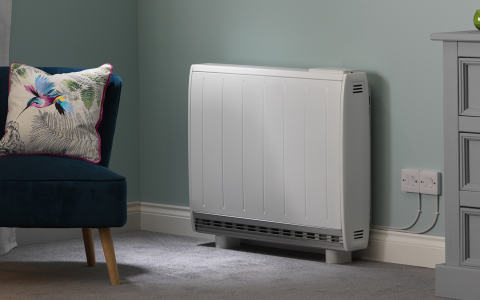Building Regulations in England & Parts L, F and O
With the transitional period now over, the updated 2022 Building Regulations Part L, Part F, and the new Part O, became legally enforceable for all new residential projects.
This is the biggest regulatory change the construction sector has seen in the last 40 years and a stepping stone in our transition away from fossil fuel systems toward decarbonised homes and the electrification of heat - and ultimately, the Future Homes Standard. This shift will impact the way we design buildings and specify technologies.
Have you decided which technologies to specify to achieve compliance for your next residential project?
The new English Building Regulations came into law on the 15th of June 2021. For projects with existing planning permission there is one year transitional arrangements period that applies on plot-by plot basis.
The updated Part L outlines the four compliance metrics for new developments: primary energy target, carbon emissions target, fabric energy efficiency target, and minimum standards for building fabric and building services.
The ventilation system choice under the updated Part F is linked to aritightness as we look to increase indoor air quality. New Part O offers modelling to help mitigate the risk of overheating in buildings.
We designed a simple guide to the changes to Part L and Part F, and the new Part O, and discuss what they may mean for your project.
Our range of HVAC solutions aim to provide future proof technologies to building projects over various sectors.
Request our presentation on Building Regulation changes that answer the most frequently asked questions.
Latest News
Our news section cover building regulations, what the changes to Part L, F, and the new Part of O entail, and what this means for HVAC specification.

New heating regulations: What does it mean for you?
Homeowners looking to update and replace their heating systems this spring need to be aware of the new EU EcoDesign legislation, also known as Lot 20 within the industry, which came into force on January 1st this year.

Glen Dimplex Heating and Ventilation finalists in H&V Awards with Zeroth
Glen Dimplex Heating and Ventilation are finalists in the annual Heating and Ventilation News Awards 2018. As the longest running, largest and most celebrated ceremony for the building services, the H&V News awards celebrate the best in forward thinking and excellence within the sector. Glen Dimplex Heating and Ventilation have been nominated for the ground breaking Zeroth Energy System.

Mythbusters: Oil-filled vs. Oil-free radiators
Dimplex portable radiators are available in two types of technology, either traditional Oil-filled variants or patented Oil-free versions. They are both incredibly durable and, unlike fan heaters or convectors, offer a combination of both convected and radiant heat, making them suitable to heat whole rooms or provide a personal form of heating. But what exactly is the difference between them?











